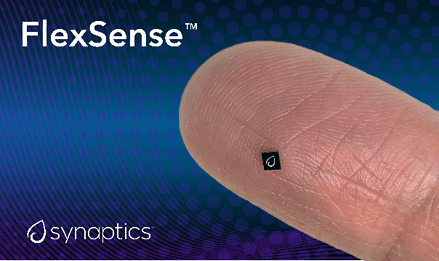Synaptics Incorporated’s FlexSense family of sensor processors integrates 4 sensors in an ultra-low-power, tiny, single chip. The sensors include capacitive, inductive, Hall effect and ambient sensors into a single chip with proprietary algorithms. The IC incorporates a central microcontroller that connects to two proprietary low-power, fast analogue front end (AFE) engines. This solution offers lower latency along with easier sensor calibration and configuration. FlexSense can reduce system design, cost, configuration, and supply chain complexity in applications such as wireless stereo (TWS) earbuds, gaming controllers, AR/VR headsets, fitness bands, smart thermostats and many other IoT devices.

According to the company, the IC uses an 80% smaller area than existing solutions. The FlexSense incorporates a central microcontroller that connects to AFE engines. These AFE engines quickly and efficiently sense and digitize data from the capacitive and inductive elements on the touch surfaces of an IoT product. The Hall effect sensors are implemented via metal plates on the device that detects magnetic fields, while an on-chip temperature sensor measures the ambient temperature.
“Today’s IoT devices are using multiple sensors to create richer interactions with users, but discrete implementations consume too much space and power, complicate system design and component supply chains, and don’t respond appropriately to false activations,” said Mahesh Srinivasan, VP, Smart Sensing and Display at Synaptics. “By intelligently fusing multiple sensors in a single processor with proprietary algorithms, we enable more robust and reliable solutions for IoT applications that allow more intuitive and responsive interactions—while reducing system design, cost, configuration, and supply chain complexity for our customers.”
The integrated sensors with an integrated processor result in a single highly flexible, stable, and reliable sensor processor measuring 2.62 mm2, the chip is capable of replacing 4 ICs thus saving over 80% area on the circuit. Furthermore, it requires lesser power than 4 different sensors and consumes around 240 µW (typically) in-ear (for a TWS application), and 10 µW in a dock or “sleep” mode.
“It’s important to bridge the gaps between the requirements of increasingly high-functioning IoT devices, and the need to accelerate product development cycles, while also simplifying the supply chain,” said Patrick Moorhead, CEO and Chief Analyst at Moor Insights & Strategy. “Particularly with battery-powered and small-form-factor applications, creative approaches like FlexSense have the potential to solve these issues while providing a richer, more intuitive experience for the end-user.”






